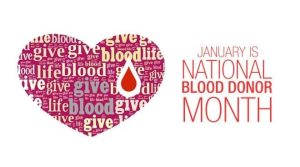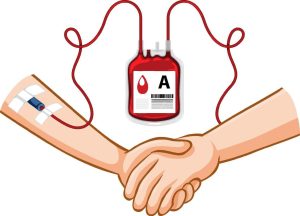
Health & Wellness

Blood Donation is a National Concern
More than 50 years ago – on December 31, 1969 – President Richard Nixon signed a proclamation designating January as National Blood Donor Month. The monthly observance is intended to honor voluntary blood donors and to encourage people to give blood at a time when more of this critical resource is needed.

Did you know that since the 1600s, scientists and medical professionals have taken a keen interest in the concept of using live blood transfusions to support hospital patients? By the early 1800s, British obstetrician James Blundell performed the first successful transfusion of human blood to a patient for the treatment of postpartum hemorrhage. Within the next century, blood types and anticoagulant agents were discovered, which aided both the preservation and matching of blood.
The process of collecting and transfusing blood into patients has likely saved millions of lives, and each year, 13 million units of whole blood are collected in the United States alone.

So why January? The first month of our calendar year tends to be a challenging time for blood centers due to various factors.
People are often busy with festivities and travel during the holiday season, leading to blood shortages — which creates a persistent challenge for blood banks and hospitals, affecting patient care and medical treatments. Winter weather conditions can also impact blood drives and donor turnout. By designating January as National Blood Donor Month, organizations aim to raise awareness about the increased demand for blood during this time and encourage individuals to make a lifesaving contribution.
The start of a new year is also synonymous with fresh beginnings and resolutions. National Blood Donor Month capitalizes on this spirit of renewal, motivating individuals to make a positive impact on the well-being of others. It serves as a reminder that a simple act, like donating blood, can set the tone for a compassionate and altruistic year. Because blood products are used quickly and last a limited time, blood donations are always needed so hospitals can effectively treat their patients. Consider making a change in your life by donating blood regularly.
While designated months, such as National Blood Donor Month, serve as important reminders, the need for blood is constant. By making blood donation a part of your routine throughout the year, you become an integral contributor to the health and resilience of your community and others. Every donation, regardless of the time of year, has a lasting impact, making a difference in the lives of those in greatest need.
As we step into the new year, let’s embrace the spirit of giving and compassion. Your decision to donate blood can make a significant impact on someone’s life, and by contributing during January, you become part of a collective effort to address the drop in blood donations and ensure patients receive the care they need. Together, let’s make National Blood Donor Month a time of renewed commitment to saving lives and fostering a culture of giving that lasts throughout the year.
Thank you to the dedicated individuals who consistently donate blood and the volunteers who work tirelessly to organize and support blood drives.

After donating blood, you should eat foods that are rich in Iron and Vitamin C to help replenish your Iron levels and restore your energy.
Garlic Butter Creamed Spinach Salmon
- 4 salmon filets, skin on or off (your preference)
- kosher salt and black pepper
- 2 tablespoons extra virgin olive oil
- 2 tablespoons salted butter
- 1 small shallot, thinly sliced
- 3 cloves garlic, minced or grated
- 1/2 teaspoon crushed red pepper flakes
- 1 cup canned full-fat coconut milk, or heavy cream
- 2 ounces cream cheese, cubed
- 1/2 cup grated parmesan cheese
- 4 cups fresh baby spinach
- juice from 1 lemon
- 2 tablespoons chopped fresh parsley
- 1 tablespoon chopped fresh chives, plus more for serving
Instructions
2. Heat the olive oil in a large skillet over medium heat. When the oil shimmers, add the salmon, skin side down and cook for 2-3 minutes, until the salmon is crisp. Gently flip, and continue cooking the salmon for another 2-3 minutes, or until the salmon is cooked to your liking. Remove from the skillet. If desired, peel away the skin and discard.
3. To the same skillet, add the butter, shallots, and garlic and cook until the garlic is fragrant, about 2 minutes. Add the crushed red pepper flakes, coconut milk, and cream cheese. Season the sauce with salt and pepper. Bring to a simmer over medium heat, stirring constantly until smooth and creamy. Add the parmesan, and spinach and cook until the spinach is wilted, about 3-5 minutes. Stir in the lemon juice, parsley, and chives. Remove from the heat and slide the salmon back into the sauce.

